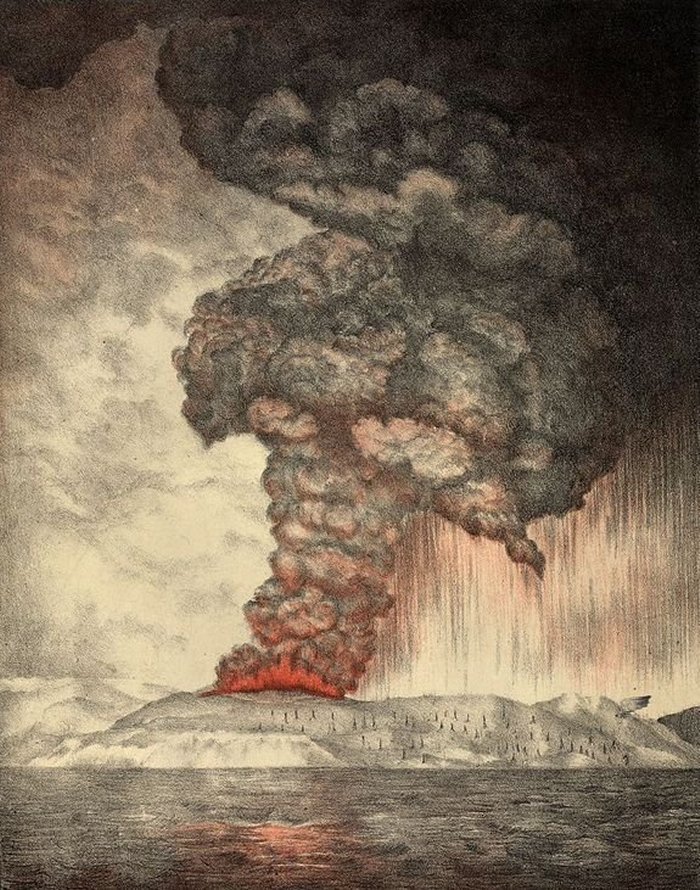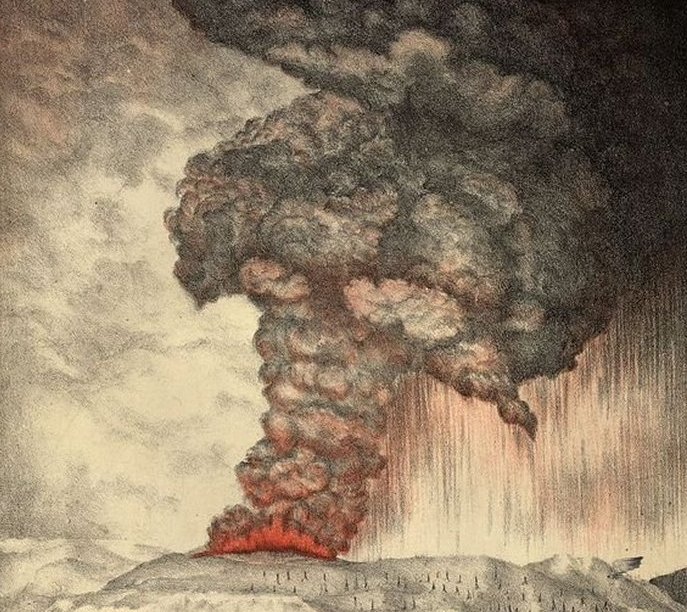MessageToEagle.com – On the afternoon of August 26, 1883, Krakatoa erupted in 1883, in one of the largest, natural eruptions in recent time.
Krakatoa is an island volcano along the Indonesian arc, between the much larger islands of Sumatra and Java (each of which has many volcanoes also along the arc).

The explosions were heard on Rodriguez Island, 4653 km distant across the Indian Ocean, and over 1/13th of the earth’s surface.
Ash fell on Singapore 840 km to the north, Cocos (Keeling) Island 1155 km to the SW, and ships as far as 6076 km west-northwest.
Darkness covered the Sunda Straits from 11 a.m. on the 27th until dawn the next day.
At least 36,417 people were killed, most by the giant sea waves, and 165 coastal villages were destroyed.
When the eruption ended only 1/3 of Krakatoa, formerly 5×9 km, remained above sea level, and new islands of steaming pumice and ash lay to the north where the sea had been 36 m deep.
Every recording barograph in the world documented the passage of the atmospheric pressure wave, some as many as 7 times as the wave bounced back and forth between the eruption site and its antipodes for 5 days after the explosion.
Blue and green suns were observed as fine ash and aerosol, erupted perhaps 50 km into the stratosphere, circled the equator in 13 days.
Three months after the eruption these products had spread to higher latitudes causing such vivid red sunset afterglow that fire engines were called out in New York, Poughkeepsie, and New Haven to quench the apparent conflagration.
Unusual sunsets continued for 3 years.
Rafts of floating pumice-locally thick enough to support men, trees, and no doubt other biological passengers-crossed the Indian Ocean in 10 months. Others reached Melanesia, and were still afloat two years after the eruption.
The volcanic dust veil that created such spectacular atmospheric effects also acted as a solar radiation filter, lowering global temperatures as much as 1.2 degree C in the year after the eruption.
Temperatures did not return to normal until 1888.
MessageToEagle. com
Expand for references
References:







